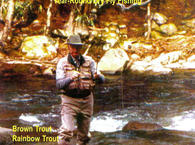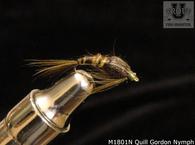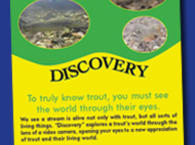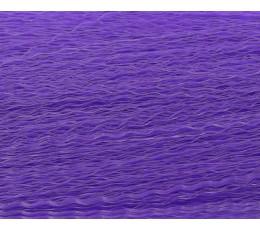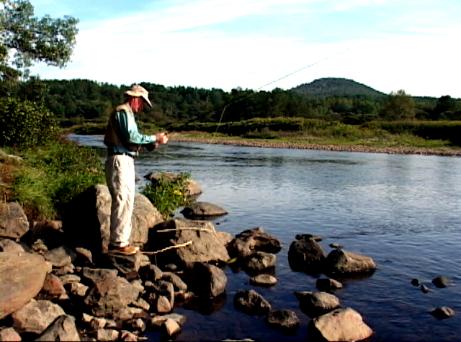
The Deerfield River starts at the Haramon Reservoir in the southern part of Vermont, then flows through Massachusetts and on to empty into the Connecticut River below Turners Falls in Greenfield, Massachusetts. It is 73 miles long and is known for its many dams which on average are only 7 miles apart. It has many recreational opportunities including whitewater kayaking, swimming near Stillwater Bridge in Deerfield, cliffs for jumping off (not recommended, however), canoeing and whitewater paddling as well as trout fishing. These activities make it a popular tourist attraction.
Once the Deerfield River enters the state of Massachusetts, the trout fishing becomes good for approximately 8 miles; and the portion that is of most interest to anglers is a 1.6 mile stretch that begins at the boulder strewn Long Pool at the Fife Brook Dam and runs down to the Boston & Maine Railroad trestle. The lower Catch & Release area starts at the railroad underpass, just above where Pelham Brook runs into the Deerfield, and runs for about two miles before it ends at the Mohawk Campgrounds. This is an especially scenic area with steep hills of 1400 feet in elevation on both sides of the river. These hills are covered with spruce, hemlock and birch trees.
The Deerfield flows through several types of bottom terrain from rough pocket water to smooth flowing, long deep pools with sets of riffles and runs. The Deerfield provides cover including undercuts banks, and crevices in larger rocks, for the large brown trout to hide under.
The Deerfield River is heavily stocked by the state of Massachusetts and due to the cool waters there are some very nice large brown holdovers that often exceed 20 inches while the rainbows will average 12 to 15 inches long. There are two catch and release areas on the Deerfield and fly fishing in these areas can indeed be rewarding
Check all the Fishing Regulations before going out and remember as the season grows longer the fish become much wiser. These trout have seen just about every fly and every possible way to present it, so matching the hatch is important and don't be afraid to try that ugly thing on your hat! These areas can also be very crowded so be prepared to some walking.
Fishing the Deerfield River:
The Deerfield is known for its generous hatches of caddis flies, blue quills, light cahills and tricos. If you are fortunate enough to fish the hatch, you will be able to see the trout rising. However, if that is not the case, you will be more successful fishing a nymph or larvae imitation. The midge larvae and pupae will also be good choices but especially in the late fall and winter since they hatch throughout the entire year. It the water is stained, streamers likt the sculpin will be effective as well.
Imitations of midge larvae and pupae are always a good choice fly to use. They hatch
throughout the year. If the water is slightly off color due to recent rains, be certain to try some
streamers. They will work anytime but better anytime the water is slightly stained. The large
brown and rainbow trout eat baitfish and sculpin so this is always a good fly selection
Spring:
The spring fishing starts in April with the little black caddis hatches followed by the grey caddis and the March brown in May and June. These trout have been trained by many fishermen so be sure to march the hatch as closely as possible and you may need to do some walking to avoid the crowds.
Summer:
Due to the careful attention to the water releases, the fishing remains good all summer with hatches of the blue quills sulphurs and cahills. But please keep some terrestrials like ants, hoppers and beetles in your fly box as well. The overhanging trees will make these flies effective during the hot months.
Fall and winter:
The early fall season is an excellent time to fish the Deerfield River. The surrounding foliage is at its best and the browns are eager to take the streamers like the brown sculpin. In earlier fall the terrestrials will remain while later in late fall and winter, trout can be caught on the midge patterns.
Access to the Deerfield River is usually very easy. The Mohawk Trail (Rt. 2), the River Road, and the Zoar Road all follow the river to a degree providing handy parking areas and trails to the river. On occasions, it may require some walking to avoid the heavy fishing pressure. Wading the river is possible however be conscious of the possibility of rising waters.
View New England in a larger map


